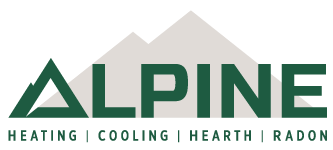What is Radon?
Radon is a colorless, odorless radioactive gas. Radon comes from the natural decay of uranium that is found in
nearly all soils. It typically moves up through the ground and into your home where it is trapped and can build up.
The Health Risk

 The Surgeon General has warned that radon is the second leading cause of lung cancer in the United States today. Only smoking causes more lung cancer deaths. If you smoke and your home has high radon levels, your risk of lung cancer is especially high. Radon gas decays into radioactive particles called radon decay products. These particles can get trapped in your lungs where they will break down further. As they break down further, these particles release small bursts of energy. These bursts can damage your lung tissue and lead to lung cancer over the course of time. Not everyone exposed to elevated levels of radon will develop lung cancer. Your chances of getting lung cancer depend mostly on:
The Surgeon General has warned that radon is the second leading cause of lung cancer in the United States today. Only smoking causes more lung cancer deaths. If you smoke and your home has high radon levels, your risk of lung cancer is especially high. Radon gas decays into radioactive particles called radon decay products. These particles can get trapped in your lungs where they will break down further. As they break down further, these particles release small bursts of energy. These bursts can damage your lung tissue and lead to lung cancer over the course of time. Not everyone exposed to elevated levels of radon will develop lung cancer. Your chances of getting lung cancer depend mostly on:
- How much radon is in your home
- The amount of time you spend in your home
- Whether you are a smoker or have ever smoked
Measuring Radon and Radon in Our Area
The amount of radon in the air is measured in “picocuries per liter of air” or pCi/L. Radon decay products are measured in “working levels” or WL. The Environmental Protection Agency (EPA) recommends fixing your home if the radon gas level is greater than 4 pCi/L or the radon decay product level is above 0.02 WL. The average indoor radon level is estimated to be 1.3 pCi/L and about 0.4 pCi/L of radon is normally found in the outside air. The EPA believes that any radon exposure carries some risk, even levels below 4 pCi/L. No level of radon is safe.

The Wyoming Radon Project has compiled radon test results by county from the kits they have provided.
As you can see, nearly 6 of 10 homes tested in Sheridan County have radon levels above the EPA recommended action level and in Johnson County about 3 of 10 homes are elevated. The EPA estimates nationally nearly 1 in 15 homes are elevated.
Fixing Your Home
Radon levels can be lowered in any home by installing radon mitigation systems. The most common mitigation system for a home with a basement is a subslab depressurization system. A pipe is installed that penetrates your basement slab and is then vented to the outdoors. A special fan is mounted inline that runs all the time. It pulls a vacuum on the soil below the slab, pulling most of the radon out of the soil before it can get into the house. A submembrane system is used for a crawl space. High density plastic is installed over the soil and sealed to the foundation wall. The same type of fan and venting system used in the subslab system is used to pull a vacuum on the soil beneath the plastic. The following techniques can be used instead of or in addition to the subslab and submembrane systems:
- Fresh Air Ventilation – Since the radon level is much lower in outside air, exchanging indoor air for outdoor air will lower your radon levels. Heat Recovery Ventilators can do this very energy efficiently.
- High Quality Air Filtration & Continuous Air Movement – These filters can capture Radon Decay Products. Continuous air movement can reduce Radon Decay Products by causing them to “plate out” or stick to walls.
We guarantee our mitigation systems will lower your radon level below 4pCi/L or you don’t pay for it.
Doing It Yourself
If your home is in Wyoming and outside of our service area or you simply want to save some money by doing it yourself, we can help. Provide us with a simple floor plan of your home and after a consultation visit we can provide you with a quote for the installation materials and instruction necessary for you to install your own system.


